Circa 288 CE, St Sebastian was apparently led to a field and bound to a stake with his hands behind his back. Roman archers then fired arrows into his body and left him there for dead.
Not much has changed in the way that death by shooting has been carried out since then, except that the bow has been swopped for a gun.
In many ways, it is just like stoning. The condemned person is pelted with missiles, until they die from their injuries. However, this is not done by a crowd of participants. There is either a lone executioner or a squad of five to nine gunmen.
In Belarus, death comes with a single bullet in the back of the head. The families are not informed until after it is over. In Bahrain, the victim lies face down on the floor and is shot in the chest through the back.
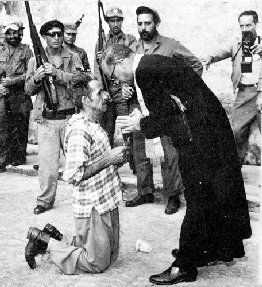 In Cuba, the condemned is either tied to a post or stood against a wall, facing a firing squad (as pictured to the left).
In Cuba, the condemned is either tied to a post or stood against a wall, facing a firing squad (as pictured to the left).
The same occurs in Egypt, but this method of capital punishment is reserved only for soldiers.
Equatorial Guinea also uses a firing squad, but has been criticized for the speed with which the death penalty is carried out. Often the accused are killed within an hour of being found guilty, after trials in which confessions extracted under torture are permissible as evidence.
Indonesian victims are taken into a field, where they stand before a 12 man firing squad. No other witnesses are allowed to be present. If a single bullet from each of the rifles fails to kill the condemned outright, then the commander completes the killing with a bullet to the head.
In Iran, the firing squad is rarely used these days, though it remains on the statute books. If more than one person is being executed, they are all shot at the same time. This might amount to a single bullet per person, as recorded in Jahangir Razmi's Pulitzer prize-winning photograph Firing Squad in Iran.
Israel has only ever executed two people in its legal history. One of them was killed with a six man firing squad; and its commander was later charged with manslaughter, when the death penalty was deemed illegal in this instance.
A firing squad is also used in Libya, though individuals on Death Row may pay blood money to save their lives. They may also escape death by shooting, if the family of their victims forgives them.
In North Korea, executions by firing squad are held in stadiums and other arenas. They are usually witnessed by hundreds of thousands of spectators.
There is a complicated situation in Palestine. While a de facto moratorium on the death penalty is in place where the Palestinian Authority is in control, those under Hamas rule can still be executed. In recent months, this has involved the victim being shot in their legs and arms, before a final bullet enters their chest.
 In China, the victims (an estimated 4,000 each year) are taken to a stadium or other public place. They are paraded in front of as many witnesses as wish to be present.
In China, the victims (an estimated 4,000 each year) are taken to a stadium or other public place. They are paraded in front of as many witnesses as wish to be present.
Then they are usually led elsewhere (a nearby hillside in some accounts) to be shot. It is a lone bullet to the back of the head, rather than facing a firing squad.
A single shot to the heart is the method used in Taiwan. However the victim is given a sedative or anesthetic first, so that they won't feel any pain.
If the condemned has signed to donate their organs after death, then the bullet is aimed at the brain stem instead.
Saudi Arabia has phased out death by shooting, in favor of decapitation. The last executions by firing squad were in the 1980s.
In Somalia, victims are taken to waste-land outside the cities and towns, then tied to stakes. A firing squad releases a volley of gunfire. Afterwards, the bodies are buried at the spot where they were executed.
I have gone into detail about death by shooting in the United Arab Emirates further down this page. The description of the execution of Rashid Rubaih al Rashidi is typical for this country. The use of the firing squad is very common in UAE.
In the United States of America, a five man firing squad is used. The victim is strapped into a chair, which is positioned before sand-bags. This country has largely moved away from this method of execution, with only one state (Oklahoma) still retaining an option to use it.
Viet Nam has also started to disdain its firing squad in preference to lethal injection. However, with the rest of the world refusing to supply the drugs, there are fears that the country will return to the bullet.
Finally, Yemen positions its victims face-down on the floor and shoots them through the back.




 In Cuba, the condemned is either tied to a post or stood against a wall, facing a firing squad (as pictured to the left).
In Cuba, the condemned is either tied to a post or stood against a wall, facing a firing squad (as pictured to the left).  In China, the victims (an estimated 4,000 each year) are taken to a stadium or other public place. They are paraded in front of as many witnesses as wish to be present.
In China, the victims (an estimated 4,000 each year) are taken to a stadium or other public place. They are paraded in front of as many witnesses as wish to be present.
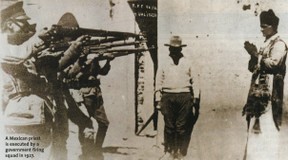 There is an aspect which is unflinchingly brutal about shooting someone to death.
There is an aspect which is unflinchingly brutal about shooting someone to death. 


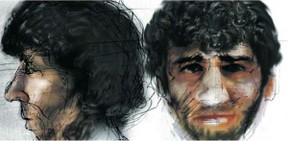 Having been physically and mentally abused by his stepmother throughout his life, Rashid was a bitter and disturbed man. He also had a very skewed notion of what was right and wrong, when dealing with children.
Having been physically and mentally abused by his stepmother throughout his life, Rashid was a bitter and disturbed man. He also had a very skewed notion of what was right and wrong, when dealing with children. James
on 10/13/2017
James
on 10/13/2017






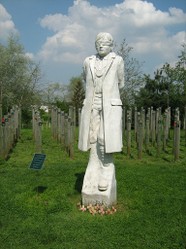

 St Tydecho's Churches in West Waleson 09/03/2014
St Tydecho's Churches in West Waleson 09/03/2014
 Goodies for an Outlander Premiere Partyon 03/06/2015
Goodies for an Outlander Premiere Partyon 03/06/2015
 Holocaust Memorial Day Interview with Rainer Höss, Grandson of Rudolf Architect of Auschwitzon 01/24/2015
Holocaust Memorial Day Interview with Rainer Höss, Grandson of Rudolf Architect of Auschwitzon 01/24/2015
 Romantic Valentine Gifts for an Outlander Fanon 01/16/2015
Romantic Valentine Gifts for an Outlander Fanon 01/16/2015


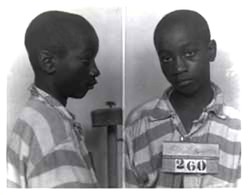
Comments
Only in relative terms. Outside the debates on assisted suicide and abortion, I find any situation in which a human being is killed to be morally reprehensible. Even in the aforementioned discussions, there are some aspects that would make me have to think long and hard.
I would guess that in some ways this would actually be the most humane method of execution? Would you agree?
I admit that I haven't found any botched executions from people being shot in the brain stem.
Missing the heart seems relatively common though, but you can't blame even the most crack marks people. It's an horrific situation for the firing squad. When Slovik was killed, a witness said that he was calmer than those assembled to shoot him. (And again, it took him a long time to die.)
I will look up the Einsatzgruppen, as I haven't encountered them before. Merci.